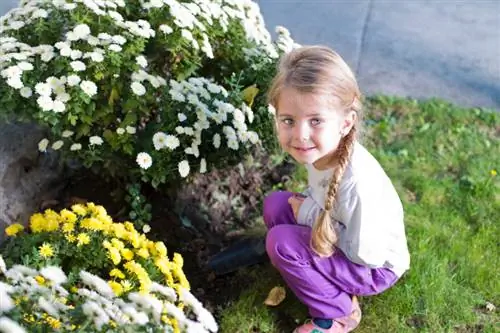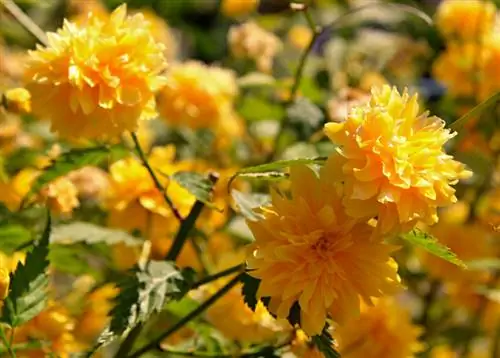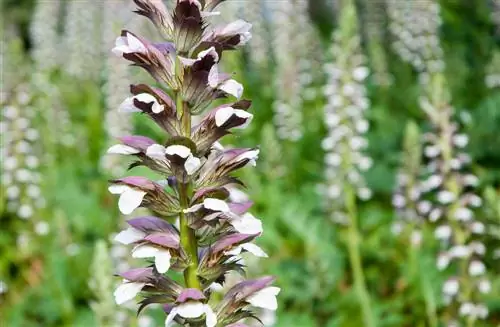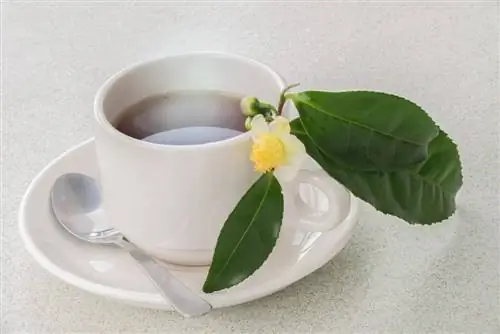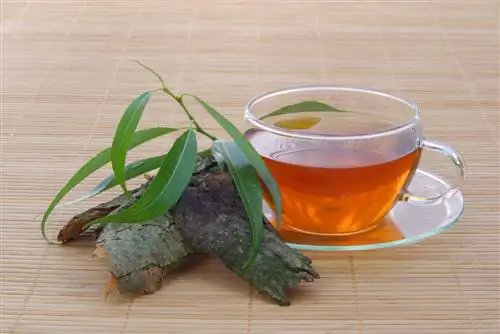- Author admin [email protected].
- Public 2023-12-16 16:46.
- Last modified 2025-01-23 11:20.
The days are getting shorter and gradually very cold, the trees are slowly becoming bare and it is storming and raining more and more often instead of the sun showing its rays. During this time, the chrysanthemum bushes bloom in many gardens and provide another touch of summer before winter finally hits. As beautiful as chrysanthemums are, they are also dangerous - at least some varieties.
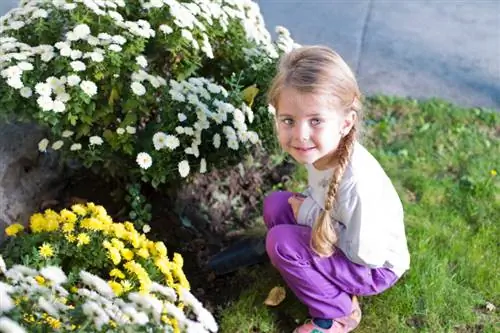
Are chrysanthemums poisonous?
Are chrysanthemums poisonous? The toxicity of chrysanthemums depends on the variety. While some species, particularly Tanacetum species, are highly poisonous, others such as Chrysanthemum coronarium (table chrysanthemum) are edible. However, all chrysanthemums are poisonous to animals such as cats, dogs, rodents and grazing animals.
Toxicity depends on the variety
It is estimated that there are around 40 different types of chrysanthemums and over 5000 varieties worldwide. Some of them, especially the Tanacetum species, are considered highly poisonous. They contain a poison called pyrethrum, which is found in many insect repellents. Other chrysanthemums are edible. In particular, the Chrysanthemum coronarium (also known as the “edible chrysanthemum”) can be prepared as a tea or salad, with both the leaves and flowers suitable for consumption.
Growing edible chrysanthemums
The seeds of edible chrysanthemums are readily available in specialist stores and are sown between March and October. Chrysanthemums are cold germinators, which is why the seeds should be stratified beforehand.
Be careful with children and pets
No matter what variety of chrysanthemum it is, caution should always be exercised around both children and animals. For animals - especially cats, dogs, rodents (rabbits, guinea pigs) and grazing animals (cattle, sheep, horses) - all chrysanthemums are poisonous and can cause severe symptoms of poisoning. These range from mucous membrane irritation, drowsiness and sleepiness to kidney and liver failure and blindness.
Tips & Tricks
Purchased chrysanthemums are by no means suitable for consumption, as these plants have often been treated with pesticides and artificial fertilizers. Here it may not be the plant itself that is poisonous, but rather the chemistry in and on it.

